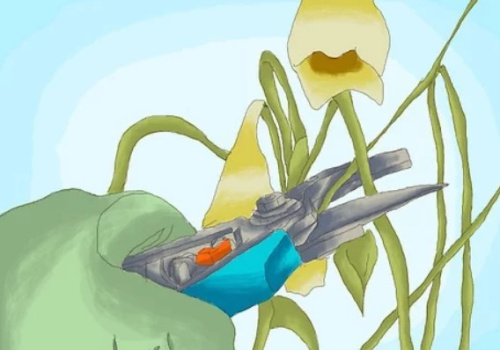Cure Daffodil Bulbs for Replanting
Daffodils are a sure sign of Spring, but sadly, their bloom time is so brief. The good news is that a resurrection in the next season is quite possible. Many home gardeners leave their bulbs in the ground year around, but others prefer to bring them up and store them until the fall planting season, when they can be planted in another part of the yard. Here are a few tips on what you can do to salvage daffodil bulbs for another season by curing them.
Contents
Steps
- Allow the blossom and the leaves to completely fade on their own. Avoid cutting them back until they are completely withered. This will usually take about six weeks. Even though it might look scraggly, the foliage collects the sun's energy through photosynthesis and pumps it down into the bulb so it can grow next year. If you want, you can cut the spent flower early, but be sure to leave the stem intact.
- Snip off the blossom (if you haven't done so already) and the withered leaves right at the soil line. If you’re going to leave them in the ground, that’s all you need to do. Normal watering of the garden and winter rains will not bring them up to bud until they are “ready”. That’s it. If your preference is to bring them up for over-summer storage, proceed to the next step.
- Dig deep into the soil several inches away from where the bulb is located. Try to bring the bulb up with one clean spade full of soil and the bulb. Use care not to damage the bulb. Handle them gently, because bruising them will cause them to rot.
- Clean off the bulb by brushing excess soil away with your fingers. Any bulbs that are clumped together will probably separate on their own as you brush off the dirt. Leave the ones that are firmly attached to the mother bulb as is. Remove any “caked-on” moist soil that is clinging to the bulb.
- Examine the bulbs for any signs of rot, deterioration or damage that may have been caused by nibbling critters. Discard bulbs that do not appear to be healthy.
- Set the bulb aside in open air for a short period of time (usually about an hour) until the last bit of soil has dried. Then, with a brush or a towel or rag, remove any additional clinging soil.
- Loosely place the bulbs into a well-ventilated bag. A mesh onion bag or the leg cut from a pair of pantyhose or nylon stocking works very well. Inexpensive tulle from a fabric store can be used to fashion a bag, too. Close up the opening of the bag with twine or string, leaving enough excess to form a loop for hanging. You can also rest them on an old window screen set on two boxes or sawhorses so that air can flow underneath them.
- Hang the bulb-filled bag in an area that will not be exposed to direct sunlight, heat or dampness. Far corners (away from the door) of the garage are fine, but avoid placing the bag near a water heater or laundry appliances. Generally, a shady spot with good air circulation is good.
- Allow the bulbs to cure. If you're using a bag and you've hung it indoors, you can simply leave them alone until you’re ready to do Autumn planting. If you used a window screen or if you left your bulbs outside, bring them in and put them in a paper bag for storage in a dark, cool, well-ventilated spot.
- Examine the bulbs again before replanting them. Look for any signs of rot or mildew and discard them if they do not appear healthy. Plant the remaining bulbs and wait for them to bloom in the Spring!
Tips
- Daffodils are an easy-to-grow bulb. Healthy, moist but not wet soil is the key factor to the growth of beautiful blossoms. Filtered or low sunlight is perfect for these hearty stems of yellow joy. Plant a few around the base of a tree for a touch of eye-catching color.
- Planting daffodil bulbs and watching them grow is a wonderful and rewarding activity for children. Invite them to participate.
- Daffodils also do well in pots. Use potting soil, not garden soil. Line a large basket (or a wicker laundry basket) with inexpensive burlap, fill it with potting soil and plant the bulbs in the basket. Add a few lobelia for an amazing contrast of color and Voila! You’ll have a fabulous contained garden bouquet!
- If you don't have any choice but to lift the bulbs during flowering or shortly after flowering, heal them in a reserve bed and keep moist so that the foliage can mature; this will allow the bulbs to build up food reserves for the following season's flowers.
Warnings
- Protect your eyes and skin. Keep your hands away from your mouth until you have thoroughly cleaned your hands with soap and water.
- Use caution when working with garden tools.
Related Articles
- Grow Daffodils Indoors
- Plant Flowers
- Share Your Gardening Expertise With wikiHow Readers
- Plant Roses
- Grow Your Own Flowers and Sell Them
- Construct a Raised Planting Bed
- Grow a Tomato Plant
- Look After Houseplants
- Choose Plants for a Garden
- Care for Bulbs
